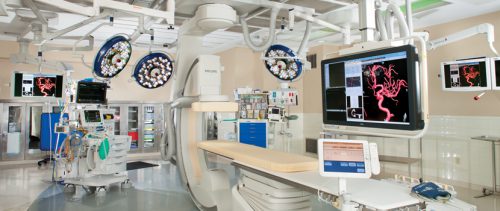Every hospital wants some gadget or other. First, it was a robot. Or two. Now, it’s a hybrid operating room.

What is this, you ask? It’s a mashup of an operating room and an interventional radiology suite. It’s new. It’s big. It’s cool (literally, which is an issue for trauma surgeons).
More and more hospitals are adding hybrid rooms at the request of their vascular surgery teams. These rooms allow for both angiographic and open operative procedures, potentially at the same time. They are perfect for endovascular procedures that need some degree of hands-in work as well. They are frequently used for thoracic endovascular repair of the aorta (TEVAR), repair of abdominal aortic aneurysm (AAA), and transcatheter aortic valve replacement (TAVR).
These rooms would seem to be perfect for some trauma cases as well. Some injuries require a mix of interventional work and open surgery. Think complex pelvic fractures and extremity vascular injuries.
But before you go rushing off to the hybrid room with the next patient you think might benefit from it, consider these issues:
- You must first secure access to the hybrid room. Just because you want it doesn’t mean you can get it. This room was probably built with other services in mind. You must work with them closely to set up rules and priorities. Consider questions like, can a trauma case bump an elective one?
- Decide what specific cases can be done in the room. Don’t waste it on procedures that can be done in any old OR. Ideally, it is for multi-team cases and must take advantage of the radiographic capabilities of the hybrid room. If it doesn’t, it should be done in any other room of appropriate size.
- Check your hardware. Make sure that anything you might attach to the hybrid table actually will attach to it. Frequently, the side rails are missing and the table thickness is different than a standard OR table. Check all of your retractor systems for compatibility. If your neurosurgeons use a skull clamp like a Mayfield, make sure it will attach to the table. If they do not, look for adapters to make it possible. Don’t discover this on your first trip to the room.
- Watch for hypothermia! These are big rooms, and are difficult to heat up uniformly. In addition, the electronics in the room may be heat sensitive, so you may not be able to raise the temperature to the levels you are accustomed. Place heating systems under and around the patient as much as possible, warm everything that goes into them, and monitor their temp closely.
- Treat the equipment with respect. This stuff is delicate, and must be used by other surgeons for sensitive procedures. Don’t break it!
Related posts:
